|
This theory emerged in the early 2000s. Following the 2008 financial crash, "recession hair" became another economic indicator, as many forwent regular salon visits. Recession hair is really for those who want to continue to color their hair but don’t want to save by trying at-home dye kits. It involves having your hair colored in a way that allows you to extend the time between trips to the salon, allowing you to go less frequently and save money. Whether it be “recession blonde” or “recession brunette” — depending on your real hues — women are styling darker colors as part of a trend being driven by economic necessity and resulting in effortless elegance. According to GlossGenius, a salon and spa software company, “lived-in color,” referring to partial, versus full, highlights or balayage, was the favorite hair color among stylists last year. Here are links to 3 articles on "Recession Hair" from the last couple weeks:
The article from The Independent is reposted below. What is recession blonde and why is it trending? Fewer trips to the hairdresser is leading to a new colour trend The state of the economy has long been reflected in beauty trends. The Lipstick Index, coined by Leonard Lauder, son of Estée Lauder, posits that sales of "affordable luxury" items like lipstick rise when consumers sense a recession looming. This theory emerged in the early 2000s. Following the 2008 financial crash, "recession hair" became another economic indicator, as many forwent regular salon visits. Now, in 2025, TikTok has identified a new iteration of this trend: "recession blonde." “Also known as ‘recession roots,’ the trend revolves around turning grown-out roots into a choice instead of a sign that a salon visit is in order,” explains hair expert Nicole Petty of Milk & Blush. “With the cost of living and salon prices increasing, many of us are looking for ways to cut back on our spending, and pricey hair maintenance is often one of the first luxuries on the chopping block.” What is recession blonde? Recession blonde is similar to the better known ‘old money blonde’, but with a slightly less appealing name. It’s a darker, duller shade of blonde interspliced with bright strands that occur when people let their golden dye grow out. “The trend embraces a more low-maintenance approach to blonde, which allows natural roots to grow out and results in softer and more dimensional highlights that blend seamlessly,” explains stylist Adem Oygur, founder of Adem London. “Compared to the ‘old money blonde’ trend, which is polished, warm, and meticulously maintained, ‘recession blonde’ leans into a more effortless and grown-out look, whilst also being perfect for those looking to stretch the time between salon visits without sacrificing their style,” says Oygur. Of course, this newly coined term is a look many have been mastering for years, from Sarah Jessica Parker to Hailey Bieber. Cost-effective colour options While simply growing out your blonde may be the best cost-saving exercise; there are other cheaper options when colouring your hair. “Techniques like balayage, root smudging and glossing are fantastic options that are lighter on your bank balance,” says Oygur. “These methods create a more natural fade-out effect, meaning fewer touch-ups while keeping the colour looking fresh and really allow for that ‘worn in’ style that we see on so many celebrities.” Oygur also says if your colour is on the warmer side, then soft face framing with caramel highlights can add depth without relying on an overall colour top-up. Some celebrities have tried out recession blonde by blending it with growing out grey, such as Emma Thompson. “If you have grey hair, using a quasi-permanent colour rather than a full permanent dye is a great option as it blends with the greys rather than fully covering them, so you don’t get a stark regrowth line,” says celebrity hairstylist Aaron Carlo. “These quasi-permanent shades deposit colour without lifting the natural pigment, making regrowth much softer. Similarly, highlights placed under the parting, rather than bold, high-contrast streaks, help maintain a natural, blended look as the hair grows.” Low-maintenance options Recession blonde is certainly low maintenance, but if you’re looking for other ways of colouring your hair that doesn’t require six-week salon appointments, experts recommend balayage and ‘bronde’. “Balayage is a great alternative to a full head of highlights, as this colour service requires minimal maintenance with gorgeous results,” says Tina Farey, colour expert and editorial director of RUSH salons. “This means less frequent trips to the salon and no harsh regrowth line – all whilst being less damaging to your hair. Balayage is a technique that hand paints the dye onto the hair as opposed to using foils. This creates are more dimensional colour and makes the hair appear more natural and lived in. “If you do want to continue getting highlights, then I’d recommend getting a few lowlights blended throughout to eliminate the harsh regrowth and add more dimension,” says Farey. Alternatively, ombré’s are also a popular option coming back this season, as a result of people growing out old colour. “Soft ombré and natural reds are also fantastic choices because they fade gracefully and don’t require frequent root touch ups,” says Oygur. “They work well if you know you won’t be attending the salon regularly and maintaining it every six weeks.” Colour trends for spring and summer 2025
While this more muted hue suggests a move away from bright blondes – Millie Bobby Brown’s recent transformation would suggest otherwise. So, what are the anticipated colour trends for 2025? “Millie [Bobby Brown] is definitely going against the grain and doing her own thing – it’s less about following a trend and more about making a statement,” says Carlo. Hair treatments as opposed to damaging dye jobs certainly seem to be on the rise. “With prioritising hair health trending on social media, we have noticed clients taking a step away from their full head of highlights,” says Farey. “2025 is the year of the ‘timeless blonde’ – a soft, golden blonde with lots of contrasting lowlights for a more natural, almost ‘scandi-blonde’ effect. “This look exudes warmth and luxury yet has an edgy feel, thanks to the interplay of light and dark shades.” The best part: It's not just for blondes. #scandinavianhairline If you’ve ever marveled at the light, natural highlights found in Scandinavian hair, then you’re already in the know on the latest hair trend. “Regardless of their hair color, their hairline, face frames and baby hairs are so effortlessly kissed by the sun and stand out so much lighter and brighter than the rest of the hair on their head,” explains New York City hairstylist Jaclyn Seabrooke. “The way the highlights peek out from underneath around the face is so subtle and flattering, as opposed to the bold, solid money piece technique that was previously trending.” This effortless effect has given rise to the trending Scandinavian Hairline—also known as the “Scandi Hairline”—color technique. Ahead, Seabrooke shares her insight on the latest color trend we predict will be spotted everywhere this summer. What is the Scandi Hairline? “The ‘Scandi Hairline’—or Scandinavian Hairline—is a color technique that immediately brightens the edge of the hairline around the face a touch lighter and brighter than the rest of your hair to replicate how the sun hits the hairline.” The Process: Typically performed at the wash basin after other highlighting or balayage services, the “Scandi Hairline” technique involves selecting a small section of hair, about half an inch wide, along the hairline. This section is then processed with freehand lightener for a duration of up to 5 minutes. “To achieve a seamless blend, it’s important that the hairline color is just one or two shades lighter than the rest of your hair,” says Seabrooke. “This ensures a natural look that enhances the beauty of your baby hairs and hairline.” From Natural to Dramatic: The beauty of the “Scandi Hairline” trend lies in its versatility. “This technique is not just for blondes, but can be achieved for redheads, brunettes and darker hair shades that also want brightness to soften the look of baby hairs and the hairline for a really natural brightening effect,” Seabrooke explains. “The technique can look incredibly natural, seamlessly blending with your full hair color, or it can be combined with stronger face-frame highlights for a more dramatic effect.” Maintenance and Touch-Ups: To keep your “Scandi Hairline” looking fresh and vibrant, regular touch-ups are recommended every 12 weeks. For brunettes and darker shades, Seabrooke recommends incorporating a gloss or toner to eliminate any unwanted brassy tones, further enhancing the natural, sunkissed look. from NewBeauty
Haircolor myths: They can twist client understanding and even trip up colorists from time to time. And while the advent of the Internet can be seen as a force for good—it can, after all, help quell client curiosity about hair dye as well as provide infinite inspiration—it can also spew misinformation unchecked. “[Clients’] belief in a myth may create false expectations about their color service leading to dissatisfaction with their results,” warns Joanne Rempel, Eufora color development manager. Your job: Disprove myths delicately. “It’s important to educate clients on the facts, but do so in a professional manner in a way that they’ll understand. Sometimes stylists overcomplicate matters for clients,” explains Amy Spencer, Malibu C artistic team member and educator. Beauty Launchpad asked three top color pros to dismantle dye lies so that you can help spread hair hue truth simply. Myth #1: Sub-Scalp Bleaching Your client swears that her previous stylist’s highlights lasted longer than yours because he placed lightener in the hair follicle. “This is definitely untrue. Lightener only works on the exposed hair. Some stylists could definitely get foils closer to the scalp than others, but any highlights are definitely on the outside of the scalp,” Rempel says. Carefully clarify that lightener is unable to penetrate into the hair follicle, and therefore can’t lighten hair developing in the follicle. Rempel advises explaining to clients the benefits of taking smaller sections and a finer weave to allow you to get closer to the scalp area and, if correcting a fellow colorist on this myth, advising her on how she can improve her foil work. Myth #2: The 24-Hour Post-Color Wash Rule We’ve all heard it: Don’t wash your hair for 24 hours after a color service. Otherwise, as the tall tale goes, you’ll strip away some of the vibrant color. “The truth is you can wash your hair after the color is processed and it won’t be harmed,” shares Sonya Dove, Wella Professionals global creative artist and Ulta ProTeam member, adding, “Now, shampooing too often can certainly strip the oils from hair, so be aware!” She notes that haircolor technology advancements make this old wives’ tale simply that: a myth worth debunking. “I always suggest clients take home color care products to enhance their color and stop it from eventually fading,” Dove says. Myth #3: Bleach Drives Direct Dyes Deeper into Hair This myth has long been held by stylists, but Spencer believes there’s no time like the present to debunk it as it affects proper formulation for corrective color. “Lightener and direct dye have the same charge, so when you use a traditional lightener on direct dye, it has a similar reaction as putting two ends of a magnet together. They repel each other, causing the dye to spread out,” she says. In order to hammer the idea home, she recommends showing colorists how lightener and direct dye work via visuals, like a photo or video. Myth #4: Haircolor Causes Irrevocable Damage “Damage is a harsh word,” Spencer says. While she admits haircolor does cause oxidization—and over-oxidization can damage hair—current technologies allow colorists to safely add color, shine and dimension sans harm. To better ensure hair integrity, Spencer suggests proper prep pre-color to help decrease stress on hair, as well as using bond builders to rebuild disulfide bonds during processing. “I like to educate clients on the science behind it without getting too technical,” she says. Spencer also recommends posting before and after visuals of color to show how color services can actually condition, gloss and leave strands stronger as a way to help demystify this myth. Myth #5: Henna-Colored Hair Can’t Be Lightened The pros differ on their assessment of this myth, though they do agree that Henna-colored hair can be lightened to some degree. First, have a thorough consultation with your client, asking about frequency of use and whether the Henna includes mineral salts in the formulation. “Not all Henna is created equal,” Rempel warns. She notes that quality and ingredients in Henna formulation differ, and that the mineral salts found in many Henna brands make total removal difficult and, in some cases, impossible. Rempel refuses to remove Henna with mineral salts as the chemical reaction with color or lightener can cause severe damage to hair. “I tell clients the truth as I know it. If they insist on wanting something done, I just say no and tell them to find another stylist,” Dove agrees. Spencer, on the other hand, has found success removing Henna after prepping the hair with Malibu C Color Disruptor and CPR, and even teaches a class devoted to this subject. However, all pros do concur on this integral step: They insist that Henna removal shouldn’t be attempted without a test strand first. “The telltale signs of mineral salts may be heating of the hair strand, smoking and damage or breakage,” says Rempel. Whatever you decide, make sure to have clients sign a release form in advance, and explain the risk involved with removal. Myth #6: Haircolor Responds Better to Dry Hair Wet, damp or dry hair: Which is best for haircolor application? It largely depends on what the manufacturer directions say, Dove concedes. “Each brand varies—even the product lines within a brand vary!” she stresses. Dove offers this example: “At Wella, Color Touch demipermanent needs to be put on clean, damp hair because the dampness helps porosity and how the formula absorbs. Yet for Koleston Perfect, Wella recommends applying on dry hair due to the technology in the formula.” Also consider damp versus wet hair. “There is a big difference between wet and damp hair when it comes to haircolor,” Rempel explains. “Damp hair (70- to 80-percent dry) is fine to color over; however, if there’s significant water in the hair, it will need to be displaced with color to achieve your desired results, and therefore slows down the process. The cuticle layer is generally more closed off when hair is wet.” She notes that as a general rule, direct dyes require application on dry hair for the color to last. The lesson in this myth: When in doubt, check the manufacturer instructions. Myth #7: Hair Should Be Dirty—Not Clean—Before Coloring How many times has a client shown up with greasy strands to her color appointment? Don’t blame her; she has definitely fallen victim to the “Don’t wash your hair prior to a haircolor appointment; a little dirt and product helps the process” myth. Wrong! “Not sure this was ever true; however, certainly today, this is an urban myth,” Rempel declares. In order to better maintain hair’s health and integrity, modern haircolor formulas feature lower percentages of alkalizer, which functions to open the hair cuticle, she explains. With less blasting open of the cuticle, anything coating the hair—say, dirt or product buildup—is counterintuitive to the process of absorbing haircolor. Therefore, clean—or ever-so-slightly soiled—hair ensures color can more easily penetrate the hair shaft without having to work through layers of grime and product. So let your clients know: No more greasy strands! Myth #8: Baking Soda Removes Haircolor While baking soda can remove color, it doesn’t mean clients should use it. “Baking soda is an abrasive cleanser and can be used on stovetops and countertops, but should not be used on the hair and scalp,” Rempel emphatically clarifies. Spencer reasons that the pH of baking soda is high, so it would likely ruin hair. “At-home remedies scare me,” she sighs, adding, “They haven’t been tested!” Rempel agrees, “We must caution ourselves about believing myths and urban legends about things like baking soda, lemon juice and other at-home remedies as being ‘better’ (i.e. more clean) for the hair. They may be more damaging to the hair because they’re not buffered. Hair-coloring agents, albeit chemical, contain buffering agents that do the job of protecting the hair strand. I like to leave baking soda and vinegar to the homemade volcano science project!” From BeautyLaunchPad
Should you wash your hair before coloring it and why would you care about whether your hair is freshly washed before a hair color appointment at all? If you have missed the debate over having your hair clean or dirty for the color service and right after it, you are at the right place to clear things up from the very beginning. As a hair color specialist, I’ve seen both nightmares and success stories when it comes to color maintenance. Read on to know the ways you can get and keep those beautiful colors you’ve always wanted, straight from the source. Is It Better to Dye Your Hair Dirty or Clean? Back in the day, hairstylists would tell their clients that dirty hair was best when it came to hair coloring. Hair color was loaded with tons of ammonia, so it could break through any product buildup or natural oils. I hate to be the bearer of bad news, but that is a big, fat LIE. Color companies use new technology in most of their products now. This means that hair color has become gentler on both the hair and scalp, and it may not break through the 3 days’ worth of dry shampoo stuck to your oily roots. Go to the salon with clean, washed hair, or you may be sacrificing gray coverage. Having dirty hair during your consultation with your stylist can be confusing for them, as your strands can appear darker than usual. This can further lead to incorrect formulation to get you to your inspiration photo. This means that you are in jeopardy of getting a shade you didn’t ask for. Prevent these hair nightmares by using a gentle clarifying shampoo followed by a light conditioner the day of (or the night before) your salon appointment. I like Redken’s Detox Hair Cleansing Cream and Redken’s Extreme Conditioner. Should I Wash My Hair Before Bleaching It? For those of you that get bright highlights or a blended balayage, dirty hair could mean an inconsistent end result. The oil within your scalp can block the lightener from lifting the hair, and hair that doesn’t lift properly can turn splotchy or orangey (us hairstylists call this “blorange”). For those of you that get your roots bleached using an on-scalp lightener, you may want to avoid coming with freshly washed hair. Instead, wash your hair at least 24 hours prior to bleaching it. Remember that fun fact about ammonia breaking through hair color? On-scalp lightener is typically full of ammonia. You want your natural oils to protect your scalp so the bleach doesn’t eat away at it, especially if you have a sensitive scalp prone to irritation. Rather than using a clarifying shampoo the day prior to coloring hair using bleach, I recommend something moisturizing, like Verb’s Hydrating shampoo and conditioner. Can You Dye Your Hair Wet? Water can create a barrier on the hair, complicating the color process. Many times, the color will still work, but it can be unpredictable. For this reason, I blow dry my clients prior to coloring when they come in with wet hair for the color service. Some color companies have created toners and glosses that can go on wet hair, but this is the only exception in my book. If you are dyeing your hair at home, do start with dry clean hair. Can I Wash My Hair After Dyeing It? Short answer? NO. The way that most hair color works is by penetrating the outermost layer of the hair, known as the cuticle, and pushing dye molecules in to react with the pigment in each strand. It takes 72 hours for the cuticle to close completely. Washing your hair prior to that means that color molecules are going to escape your strands and color will fade quickly. I speak on behalf of all hairdressers when I say this: PLEASE, skip a few regular wash days and wait the three days for long-lasting color. Tips on Washing Color-Treated Hair Now that it’s been three days and you’re allowed to wash your hair, I’ll let you in on some of the best ways to maintain it.
I will add a bonus hot tip here: consider purchasing a shower head filter to remove hard water and other impurities from your water. Your water can be causing dry scalp, brassiness, and brittle hair. From The Right Hairstyles
For blonde hair in the ’70s, lemon & sunshine recommended (1977) Asbury Park Press (Asbury Park, New Jersey) April 11, 1977 If you’re a natural blonde, you know you have special problems when it comes to keeping your hair bright and shiny. Now a New York hairstylist has a special tip for blondes who find it hard to keep the “sunshine” in their hair. “Step one,” says Louis of Louis Guy-D, “is to wash the hair often with a gentle shampoo. Naturally blonde hair must be absolutely clean to be its brightest, and this may mean daily shampooing, for which baby shampoo is always recommended. “Blondes can’t go very long between shampoos before dirt and oil turn their hair ‘mousey’ looking. Also, when blonde hair is dry, it can look like straw. Baby shampoo doesn’t strip the hair of all its natural conditioners, which helps blonde hair shimmer with natural highlights.” 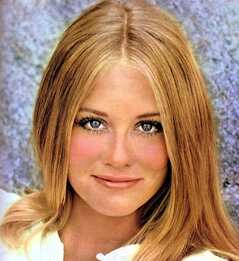 Then, to continue the natural approach to bright, shiny blonde hair, Louis suggests a lemon or lime squeeze. “Simply take a lemon or lime and squeeze it onto freshly-washed hair, gently comb through and let dry, preferably in the sun, but a hairdryer will do on rainy days.” Louis says the citrus juices act as a mild bleach and gently lighten the hair. “Continue this treatment for a few days, and any natural blonde will see her hair lighten up, take on shiny highlights and glow just like sunshine,” promises Louis. “By starting this natural highlighting treatment now,” says Louis, “blondes can have sun-lightened hair well before it’s time to slip into that first bikini.” Speed up the sun with Sun-In (1970) Get the true sun-lightened look fast! Just spray on Sun-In. Give your hair that sun-lightened look that once took all summer. Sun In works with nice, warm, natural sunshine. Lightens faster than the sun. But never so fast as those harsh hair-lighteners. You’re in complete control — from that first little highlightening to as sun-lightened as you’d like to look. And because Sun In conditions, use it often ’til you and your own special sun-lightened look discover each other. You’ll look like you spent all summer in the sun. Try regular or (for the maximum sun-lightened look) new Super Sun In. All you add is sun. California Blonde: The first lightener, toner & conditioner all in one. (1970) Max Factor creates “Color-Controlled Blonding”… so even brownettes can go blonde in one lightening-quick step. It’s sunshine you shampoo in. Now brownettes can go blonde and blondes can go blonder. The very first time. And in one lightening-quick step. Only California Blonde gives you these shades, all softness and sunshine. Truly natural-looking blondes that last shampoo after shampoo. And if you like the idea of hair that’s more manageable, healthier-looking, and nicer to touch, only California Blonde gives you the benefit of 12 conditioners in a proteined base. You’ll see, no matter which coast you live on,life’s a lot sunnier when you’re a California Blonde. In 6 Glow West Shades. New Tried & True California Blonde. Only by Max Factor. Clairol’s Born Blonde (1969) Years ago, there were only two types of blondes. Demure but mousey. And bright but brassy. But, baby, things have changed. And today a blonde can be downright sexy and still be a lady. If she knows about Clairol’s Born Blonde. Born Blonde isnt a timid blonde that promises everything and then doesn’t deliver. But it isn’t an old-fashioned formula with peroxide in both steps either. (It was those tough-as-brass bleached cuties that started the rumor that blondes were dumb.) Born Blonde is different. Feels different. Acts different. First, you gently take the darkness out of your hair with Born Blonde lightener. Then you shampoo in Born Blonde toner in any of 12 shades. Extra rich (we put in lots of conditioners) and extra gentle (we leave out peroxide), Born Blonde toner makes your hair feel good while it makes it look good. Of course, using Born Blonde isn’t sticking to the rules. But do you want to play fair? Or win? When you go blonde, go all the way Lemony fresh! Lemony fun! (1970) Lemon Go Lightly – Gently lightens under the sun! Brown, blonde or in between? You can go lighter with CLAIROL Lemon Go Lightly. It lightens your hair with a little helpfrom the sun. Just spray it on, and go as light as you like… gently … gradually. Rich CLAIROL conditioners help protect your hair’s natural texture. keep it soft and manageable as it lightens. P.S. If you’re a darker brownette, or a blonde in a hurry, get CLAIROL Lemon Go Lightly Plus. Hair. If it’s timid it’s not today (1970) Remember grade school and that little blonde with the long braids? The one all the boys adored? Well, boys still adore girls with blonde braids. But a fat lot of good that does you if your hair is washed-out blah mousey brown or dull and dark. And if you think summer and the sun and a timid formula is enough to make you really blonde, you’re just fooling yourself. What you need is Clairol’s Born Blonde. Lemon Go Lightly (1971) Has your hair gone into hibernation?
Brown, blonde or in between? You can go lighter with CLAIROL Lemon Go Lightly. It lightens your hair with a little help from the sun. Just spray it on, and go as light as you like… gently … gradually. Rich CLAIROL. conditioners help protect your hair’s natural texture. keep it soft and manageable as it lightens. P.S. If you’re a darker brownette, or a blonde in a hurry, get CLAIROL Lemon Go Lightly Plus. |
Hair by BrianMy name is Brian and I help people confidently take on the world. CategoriesAll Advice Announcement Awards Balayage Barbering Beach Waves Beauty News Book Now Brazilian Treatment Clients Cool Facts COVID 19 Health COVID 19 Update Curlies EGift Card Films Follically Challenged Gossip Grooming Hair Care Haircolor Haircut Hair Facts Hair History Hair Loss Hair Styling Hair Tips Hair Tools Health Health And Safety Healthy Hair Highlights Holidays Humor Mens Hair Men's Long Hair Newsletter Ombre Policies Procedures Press Release Previous Blog Privacy Policy Product Knowledge Product Reviews Promotions Read Your Labels Recommendations Reviews Scalp Health Science Services Smoothing Treatments Social Media Summer Hair Tips Textured Hair Thinning Hair Travel Tips Trending Wellness Womens Hair Archives
June 2025
|
|
Hey...
Your Mom Called! Book today! |
Sunday: 11am-5pm
Monday: 11am-6pm Tuesday: 10am - 6pm Wednesday: 10am - 6pm Thursday: By Appointment Friday: By Appointment Saturday: By Appointment |








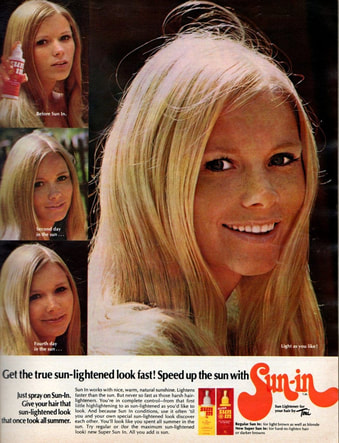
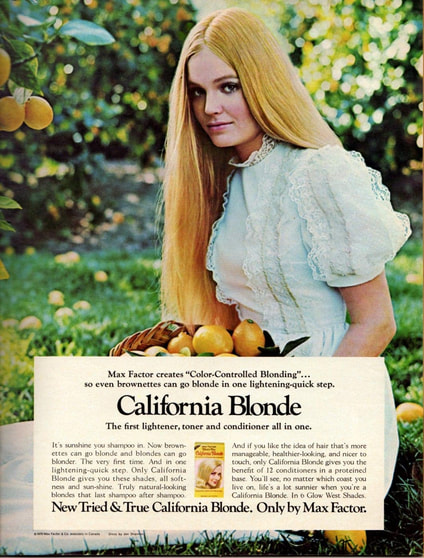
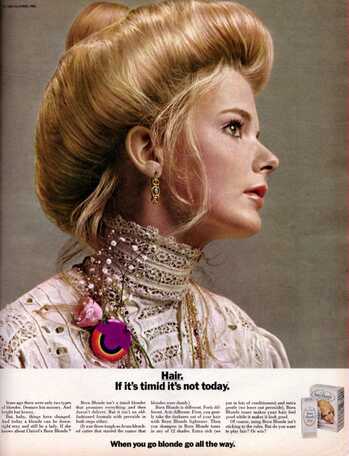
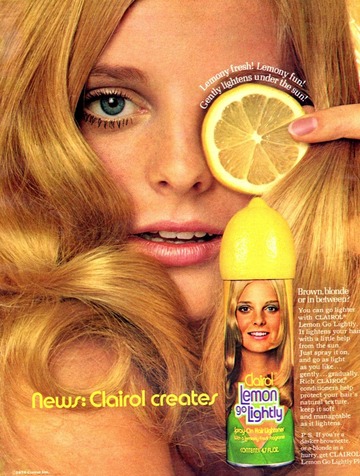
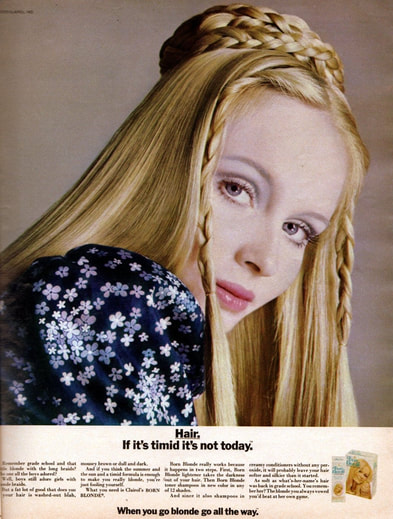
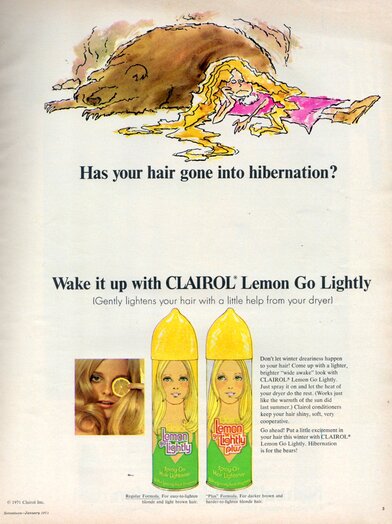
 RSS Feed
RSS Feed